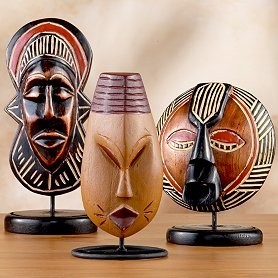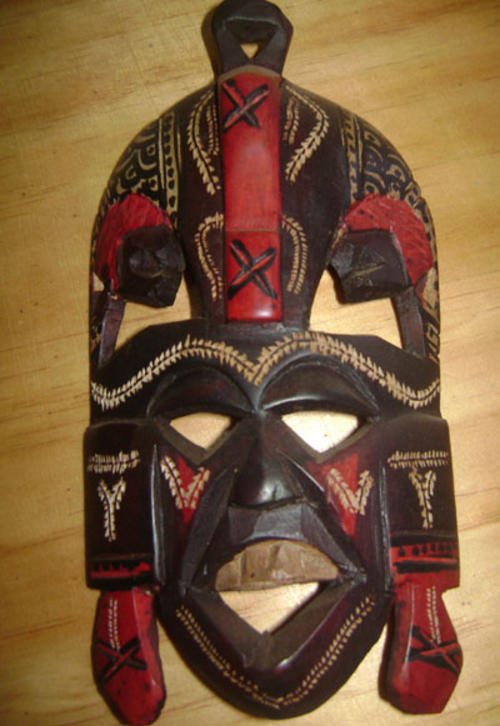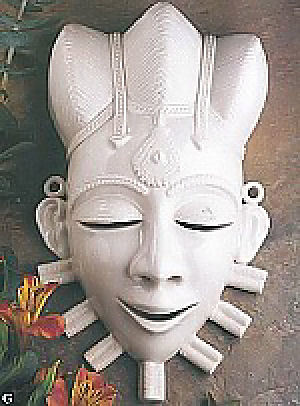African Tribal Masks
History
For centuries, the tribal masks of Africa played an important role in the culture of its indigenous communities. Imbued with mysticism, masks were integral to rituals, festivals, initiation ceremonies and secret societies. The advent of colonialism and the ensuing disintegration of tribal homelands led to thousands of people migrating into cities. As traditional systems of living vanished, so did tribal identity. Masking ceremonies continue to exist, but no longer have the social significance they once did.
Cultural Significance of African Masks
Typically, the use of masks was accompanied with singing, dancing, playing of musical instruments and prayer, thus making it both a craft as well as a unique performance art form. Masks have traditionally been worn during harvest festivals, war preparations, initiation ceremonies, in good times and in bad.
|   |
   | Ritual and Social Meanings
According to tribal beliefs, a mask represented a spirit who possessed the wearer. Not everyone could wear a mask; an individual had to be specifically trained for the purpose or possessed of mystic powers, like the ability to mediate between the living world and spiritual realm of ancestors and other beings.
During a ceremony, the mask wearer would enter into a deep trance, a state in which he purportedly received the wisdom and advice of the tribe's ancestors. He would narrate stories or enact the history of his people. Since his utterances would often consist of unintelligible moans and grunts, a village elder would translate these sounds for the benefit of the tribe watching. Masking traditions are thought to have developed as a means of social control and to educate the community.
Subject and Style
A host of subjects were depicted during a ritual or ceremony, ancestral spirits, gods, mythical creatures and animal spirits possessed of supernatural powers.
Masks were made of wood, leather, metal, fibre or other materials. While designing one, a sculptor sought to evoke moral and psychological traits, rather than create an actual portrait. Great care was taken to select the right wood. After chiselling, the mask would be painted with natural pigments like charcoal and vegetable dyes or mineral powders. White typically represented death, but as a link between the living and their ancestors, it also had positive connotations.
Masks were worn in various ways. Vertical masks covered the entire face. Some masks encased the head like helmets while others were worn as crests, with a cloth covering the wearer's face.
In recent times, there has been a resurgence of interest and pride in these powerful art forms. As symbols of the rich cultural heritage of Africa, masks now feature prominently in museum and art collections.
|









